Introduction
Email marketing is still a highly effective way to generate more leads and customers for your business, even in 2022.
But do you know how effective it truly is?
The average email marketing ROI is much higher than other methods of digital marketing. Let’s explore why this is the case, and how you can improve your own email marketing ROI.
What is email marketing ROI?
ROI stands for Return on Investment, which is a metric that companies use to measure how much money is being generated for every dollar spent.
Email marketing ROI is simply the number that represents how many dollars go out for every dollar you invest in this marketing strategy.
For example, if you spent $100 on your email marketing campaign and got back $300, you have an email marketing ROI of 300%.
If you have an ROI under 100%, it means you are losing money. For example, an ROI of 50% means that if you invested $100, your email marketing campaign only generated $50 in revenue, which means you’ve lost $50.
Why your email marketing ROI is better than other marketing strategies
If you’ve ever done some research on email marketing, you may have stumbled across the statistic saying that the average email marketing ROI is 4200%.
That means you can get $42 for every dollar spent on email.
So why is email marketing so effective compared to other marketing strategies?
Email marketing is a powerhouse. So many people use email, which means it’s an incredibly effective way to reach your audience.
In fact, it’s estimated that global email users will go from 3.9 billion in 2019 to 4.48 billion by 2024.
This same source states that 94% of marketers say email is in their top three most effective marketing channels, while 77% say email is in their top two.
Email will just keep growing, too. Marketers expect to continue to send more and more email as the years go by.
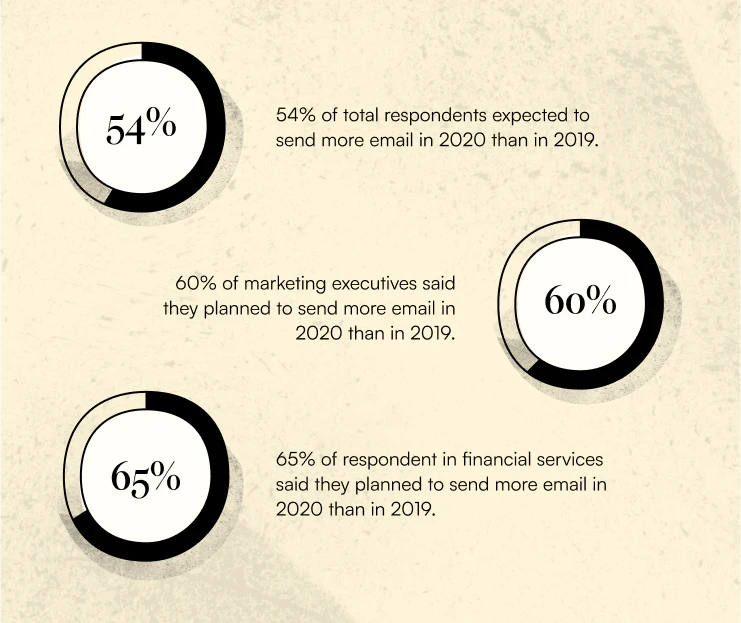
It’s also important to note that engagement rates for emails are relatively high compared to social media.
In 2022, the average open rate for emails across all industries was 21.50%, and clickthrough rate was 2.3%.

How does this compare to social media?
For a Facebook post, the average engagement rate in 2020-2021 was 0.13%. On the other hand, Twitter generated an average of 0.07% while Instagram got 1.16%.
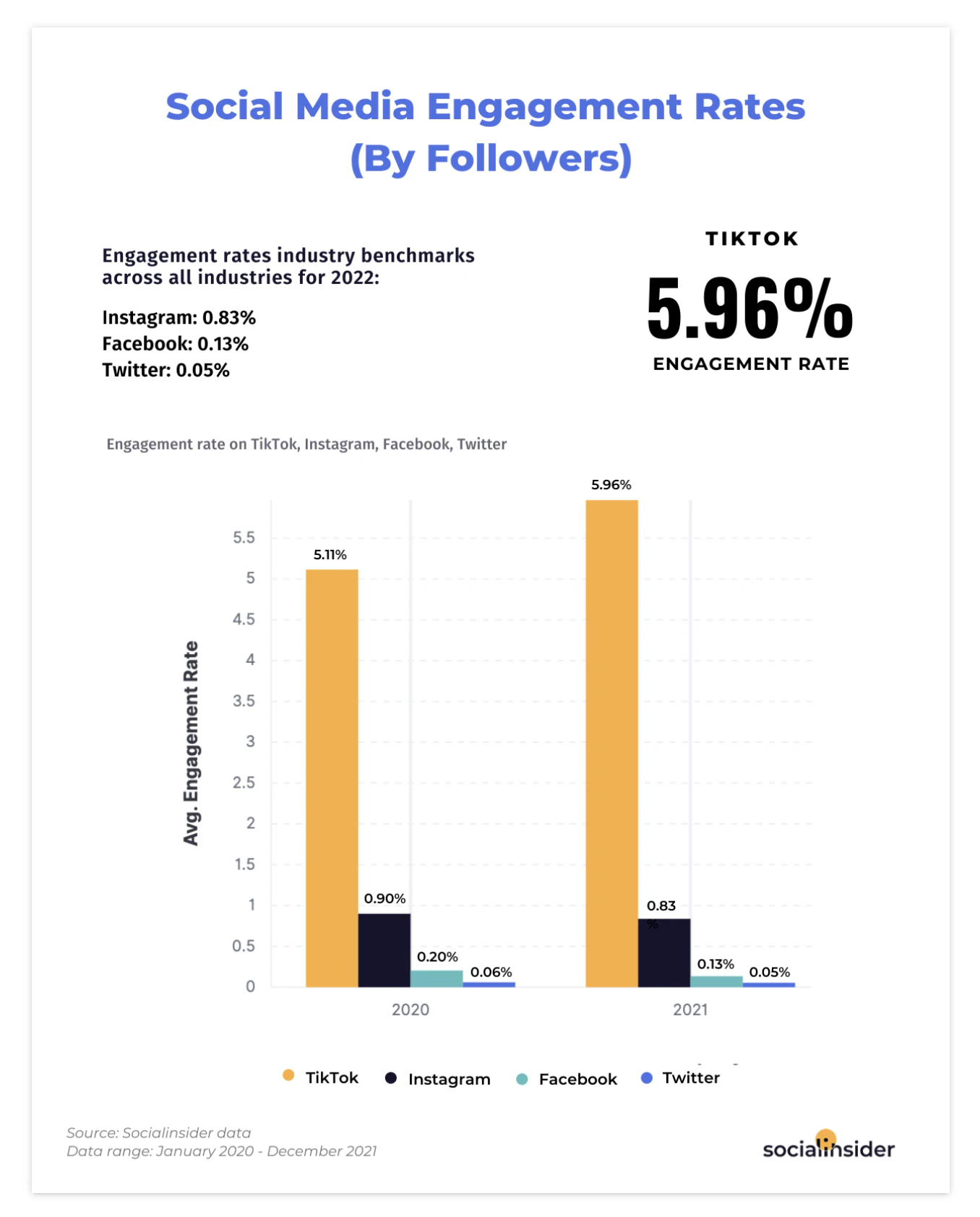
This is nothing compared to the average for email!
If you look at these numbers closely, it means that even at best (using Instagram), your emails will still generate 21 times more engagement than an Instagram post.
And the more people engage with your content, the more likely you are to have more conversions.
How you can benefit from email marketing
If you haven’t already started using email marketing for your business, you’re missing out on several benefits.
First off, you know your customers will check their email several times a day. Only 1.6% of Americans never check their email during the day, while 33.8% check email throughout the day - too many times to count.
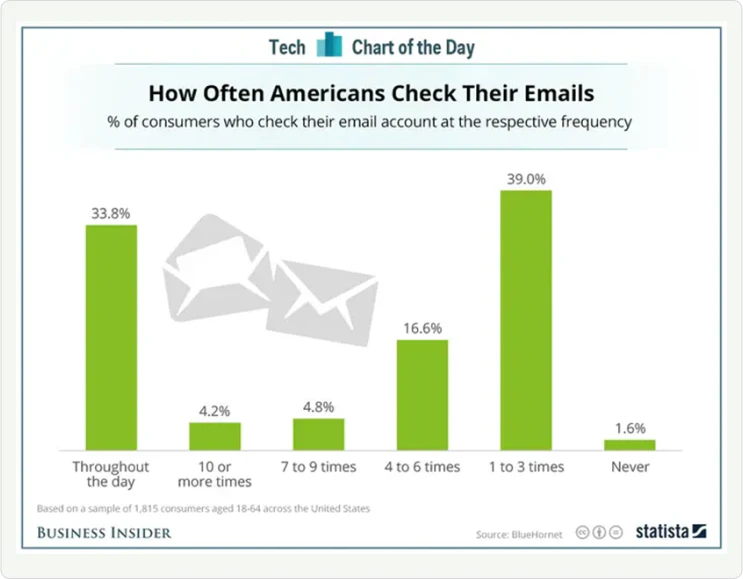
This means that your customers are likely to see your emails.
Email marketing also has a much higher average conversion rate than social media, with an average of 6.05% compared to 1.9%.

With email marketing, you can also increase your traffic to your website. Since the click-through rate is higher than on social media, you can expect to generate more traffic from an email than from a social media post.
When you use the right tools, it’s also easy to keep track of your email marketing metrics. Most email marketing software comes fully integrated with powerful analytics tools to help you make the most of your marketing data.
Plus, unlike social media and content marketing, you can automate a huge part of your email marketing efforts. If you send out recurring newsletters, you won’t be able to automate the creation of those emails, but you can definitely automate email sequences that aren’t time-sensitive.
For example, every time someone downloads your lead magnet, you can automatically add them to a sequence of promotional emails that are relevant to what they downloaded. You won’t have to manually send those emails every time someone downloads.
Finally, email marketing easily integrates into your other marketing efforts. If you’re using social media, you can use call-to-actions to get people to sign up to your email list. If you’re blogging, you can create content upgrades in exchange for opt-ins. If you’re using ads, you can automatically follow up with people who gave their information but didn’t purchase or book a call.
How to calculate the ROI from your email marketing campaigns
So now that you know why you should start email marketing in the first place, how can you calculate the ROI you’ll get from this endeavour?
First, you need to calculate how much you spent on email marketing.
This isn’t always straightforward to calculate.
First, you’ll need to include the cost of your ESP, or email service provider. This is the email marketing software you’ll use to plan, automate, and send your emails while managing your subscribers.
There are several CRMs you can choose from that offer a variety of price ranges. Typically, you’ll pay more as your subscriber count goes up.
Here are some of the best CRMs you can choose from:
- Convertkit: Starting from $0 to $59 for up to 1000 subscribers (best for small creator businesses)
- ActiveCampaign: Starting from $20 to $375 for up to 500 subscribers (best for more complex automations)
- Klaviyo: Starting from $0 for up to 250 subscribers and $20 for up to 500 subscribers (best for Ecommerce businesses)
When you know the price of your CRM, you’ll also need to account for the hours spent on your email marketing.
This will depend drastically on whether you’re doing everything yourself, giving this task over to an employee, hiring an email marketing agency, or hiring contractors to do different tasks for your emails.
Here are some examples of the tasks and specialities you may need:
- Copywriting: Writing the text in your emails to optimize for conversions
- Design: Creating unique graphics and professional email designs for Ecommerce emails
- Automation: Setting up the tech in your CRM to automate your email marketing campaigns
- Integrations: Making sure your CRM is well integrated with your other tools (for instance, subscribers get added to your list when they download your lead magnet from your website)
- Conversion rate optimization: Testing out variations of your emails to increase conversions and boost your ROI
If you don’t have in-house talent who can do these tasks and don’t want to manage several freelancers, consider hiring an email marketing agency to handle everything at once for you.
Once you know the full extent of your spend, it’s time to calculate your gain from your emails. Most CRM have features that allow you to track revenue generated directly from emails, but keep in mind that some of these features may be available only at higher pricing tiers.
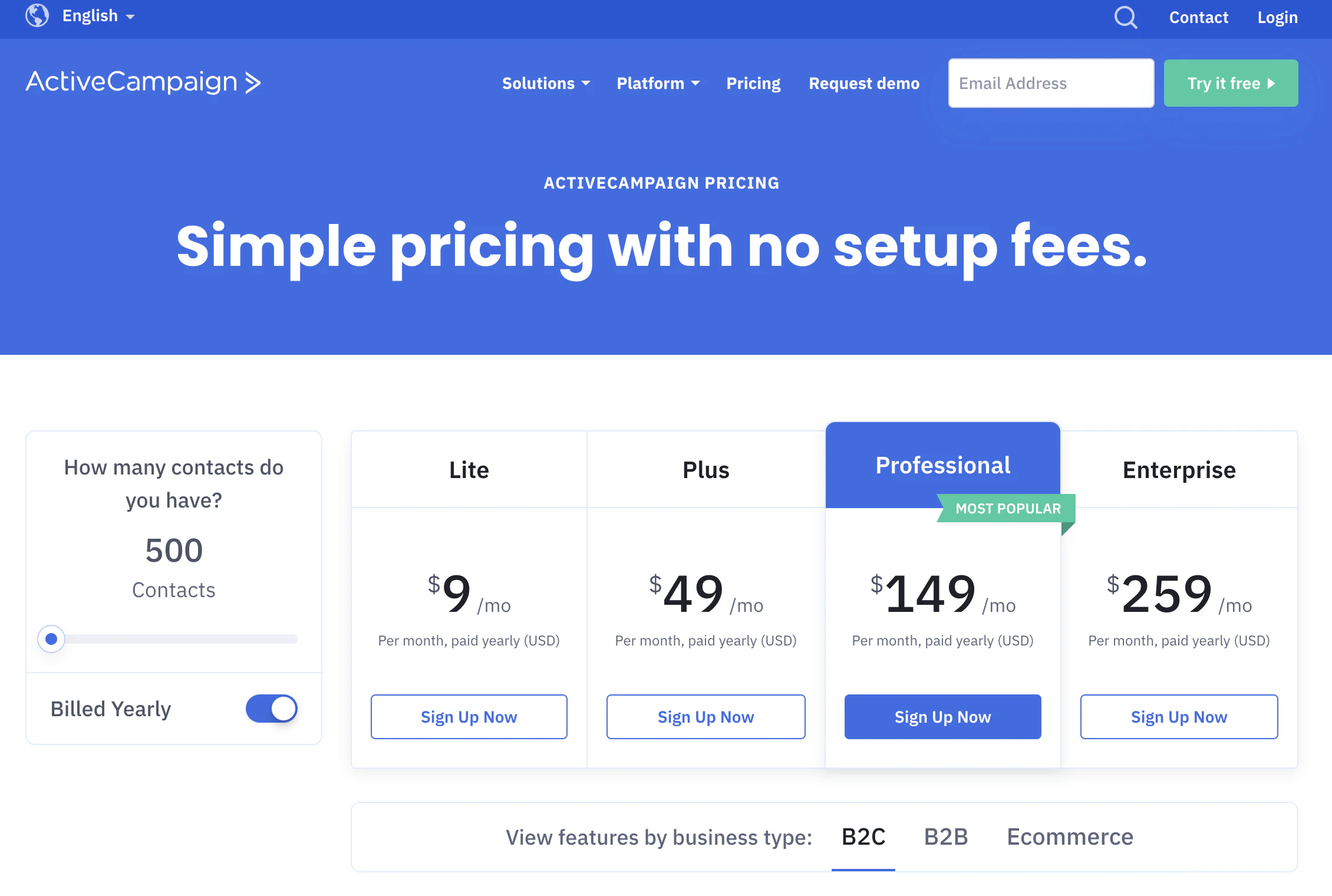
Some CRM providers will tell you the average value of a lead instead. If this is the case, you can multiply your average lead value by the number of conversions generated, and you’ll get your total revenue.
Now, you have all the data you need to calculate your email marketing ROI. Simply use this formula:
((Gain from emails - spend on emails) / spend) * 100 = ROI
Let’s walk through an example.
If you’re using Active Campaign and have 2500 contacts at the Professional tier, this means you’re paying $175 a month on your CRM. You have two employees who spend about 25 hours a month each on email marketing - one is paid $20 an hour, and the other is paid $30 per hour, which means this is costing you $1250 a month in labour.
In total, you’re spending $1425 on email marketing every month.
This month, you generated 125 conversions from your email list. The average lead value is $90, which means you’ve generated $11250 in return.
Let’s plug in the numbers:
((11250 - 1425) / 1425) * 100 = 689%
So with those numbers, you have an ROI of 689%, which means you generated more than 6x the amount of money invested in your email marketing endeavours during the month.
How to improve your email marketing ROI
No matter what your current email marketing ROI looks like, let’s tackle some strategies and email marketing tips you can use to make it even better.
Automate your email marketing efforts
If you’re only sending out weekly newsletters, you’re missing out on a huge opportunity with email marketing.
You can put in the work upfront and automate a large part of your email marketing strategy so that it keeps generating clients for you while you focus on other aspects of your business.
For example, you can create a promotional sequence that directs your subscribers to a specific product whenever they purchase another predetermined product.
Or, you can send emails with more information about a topic and related products or services when a subscriber clicks on a link in a previous email.
But apart from predetermined email sequences, you can also automate the organization of your list.
Most email marketing software will allow you to automate the tagging of your subscribers and let you trigger certain actions.
For example, you could have the following automation:
- Subscriber takes a quiz and is tagged with Quiz Result
- Subscriber is added to the Quiz Welcome Sequence
- Five emails are sent out one day apart from each other
- When the sequence is complete, they are added to the Newsletter segment to start receiving regular newsletters
Add personalization in your marketing emails
On average, emails with personalized subject lines are 50% more likely to get opened. This is one of the reasons 60% of marketers say email personalization is a priority for them.
So personalizing your emails is a highly effective way to increase your ROI.
You can personalize your emails based on several factors:
- Your subscriber’s name
- What type of customer they are / customer status
Ways in which they’ve interacted with products, services, website, or past emails - Subscriber preferences
- Geolocation
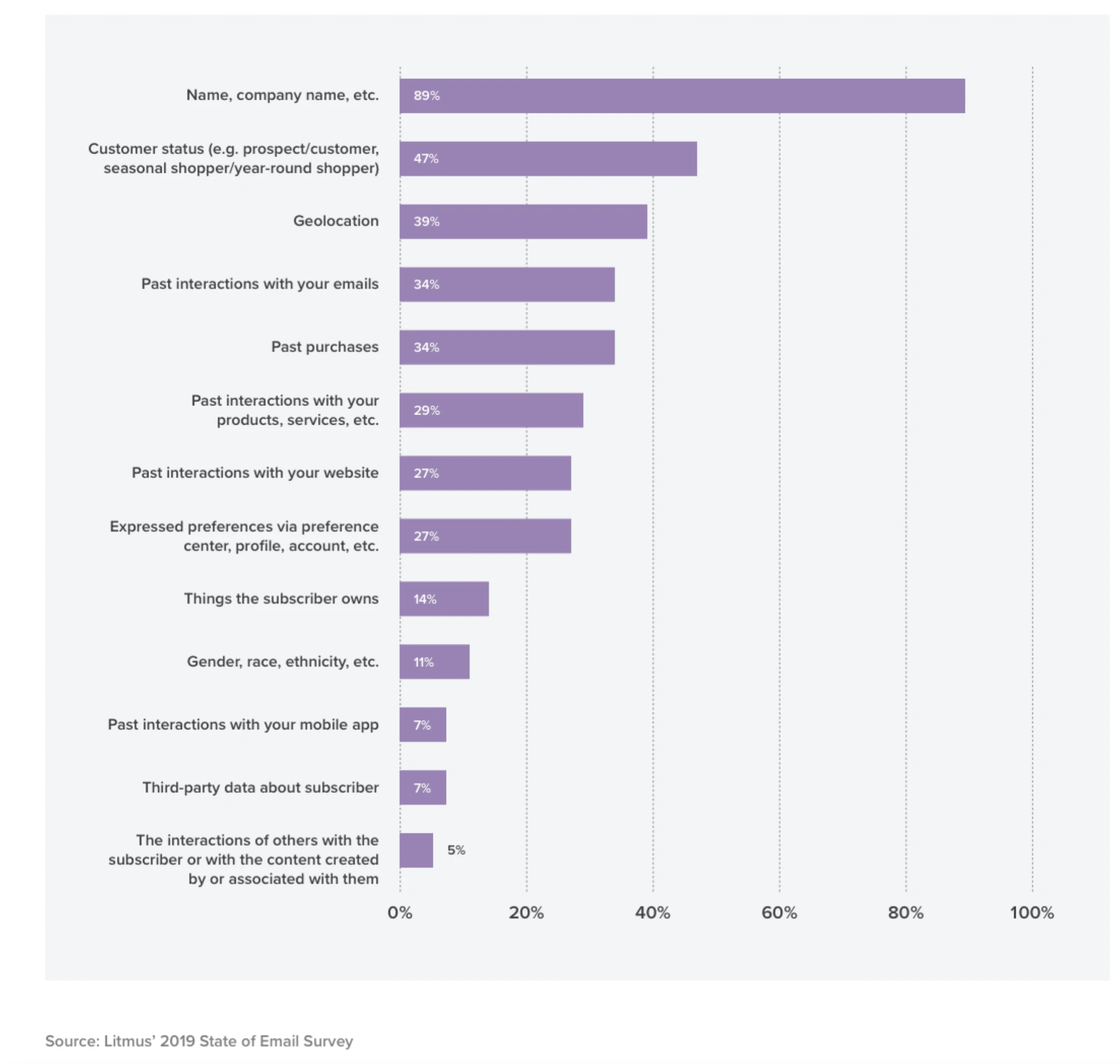
For example, if a subscriber has purchased products in the past, you can tailor future emails to give them recommendations based on those purchases.
A/B test your subject lines
One of the reasons email marketing can have such a great ROI is the ability to A/B test your subject lines.
When you post on social media, you can only post one version of your content.
But with emails, you can test two subject lines against each other with a small percentage of your list before sending the winning subject line to the remainder of the list.
You can also A/B test the emails themselves depending on which CRM you use.
According to Litmus, email marketers who A/B test their emails have an average ROI of 4800% compared to 3500% for those who don’t.

There are several aspects of your emails that you can A/B test to optimize your conversion rate and improve your ROI, including:
- Subject lines
- Call-to-action copy or buttons
- Images vs no images
- Using different types of images
- Copy variations
- Short emails vs long emails
Nurture new subscribers using a welcome sequence
A welcome sequence is a way for you to introduce your new subscribers to your brand.
Your subscribers should receive a welcome sequence when they first join your email list. The welcome sequence can be tailored to how they entered your list to give a more personalized experience.
In a welcome sequence, the purpose is not to go for the hard sell. Instead, you should try to nurture new subscribers and gain their trust.
You can do so by:
- Sharing a curated list of your best resources
- Talking more about your brand and how you can help them
- Sharing relevant stories
- Giving out more information about your products and services (without going for the hard sell)
- Providing more details relevant to the way they entered your list
Here’s a snippet from copywriter Erika Holmes’ welcome sequence:

Your welcome sequence lets your subscribers know what to expect from you in the future. It can also help increase your open rate, because you’re making sure to engage with your subscribers while they are still brand new. This gets them in the habit of opening and reading your emails.
Allow subscribers to opt out of specific promotions
It’s easy to think that the best way to run an email promotion is to send the emails to as many people as possible.
But this isn’t the case.
Not everyone will want to hear about what you have to offer. But this doesn’t mean these people couldn’t be interested in other promotions you have coming up - and they may be interested when you run the same promotion in the future.
If you don’t give an easy way for subscribers to opt out of specific promotions, they’re more likely to unsubscribe from your entire list.
To avoid this, you can add a custom link in every promotional email that gives them this option. Here’s what it can look like:

Your subscribers will appreciate the option and are more likely to stick around for the long run.
While providing an unsubscribe link for specific promotions may not boost your ROI in the short-term, it will help you nurture a list of highly engaged subscribers who respect your brand. This will help you improve your ROI in the long run.
Add GIFS in your emails
If pictures are worth a thousand words, GIFS are worth an entire book!
GIFS are an effective way to communicate complex feelings with humor. They’re highly shareable and make your emails memorable.
Plus, marketers who add GIFS in their emails have an ROI of 4600% compared to 3800% for those who don’t.
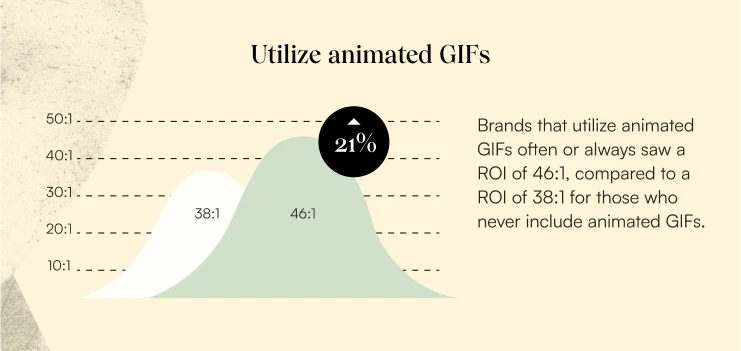
You can use existing GIFS that your audience will relate to, or you can create your own, like email marketer Tarzan Kay does from time to time:

By creating your own GIFS, you’ll start building brand awareness and give a face to your brand.
But you also have an opportunity to extend your brand outside of email.
Sales funnel strategist Jenn Robbins started creating her own GIFS to use in emails and social media posts.

On top of making her emails stand out (since she doesn’t use the same meme-able GIFS everyone else uses), she also gathered 70 million views on Giphy.

Use video in your emails
Video is another effective method to stand out and increase the engagement you get from your emails.
And more engagement means a better ROI for your business.
You can use tools like Loom to add videos to your emails without having to upload anything to Youtube or other platforms.
Another effective tool that was designed specifically for email marketing is Bomb Bomb. It allows you to create videos with short previews inside of your emails.
What’s great about video is that you can engage directly with your subscribers if you wish - much faster than you could if you were to reply via email. For example, if a subscriber replied to one of your emails to ask a question about an ongoing promotion, you could quickly record yourself giving an answer in front of your webcam and send it over.
This method is only doable up to a certain point - if you receive several dozen (or even hundreds) of replies every day, you probably can’t answer them all personally. But if your email list is still small enough, taking the time to respond to your subscribers via video will help increase their trust towards you.
Plus, if you’re answering people faster, you’re also saving time, which reduces the cost of your email marketing efforts!
Survey people who didn’t purchase (and those who did)
Want to find out why not that many people purchased the last time you ran a promotion via email?
Or do you want to understand how your last promotion was such a hit?
You can survey your audience directly to find out what they’re thinking.
To people who purchased, you can ask them something like:
“What was it that almost stopped you from buying?”
You can also ask them:
“What was going on in your life when you decided to purchase?”
This will allow you to understand more about your target audience, their pain points, and their desires.
For people who didn’t purchase, you can send out a simple survey with a single question and pre-existing answer:
“What is the biggest reason you decided not to purchase?”
- Too expensive
- Didn’t need this at the moment
- Didn’t have time to purchase before the promotion ended
- Not the features I needed
- Didn’t like the item/service/etc
- Other (with an empty field to specify the reason)
With the data you gather, you’ll be equipped to make improvements for your next promotions.
Desired outcome
Some of these email marketing strategies will cost you more money at first, while others won’t.
However, they should also help you generate more income. Make sure you keep track of your metrics to find out which tactics are actually increasing your ROI, and which ones aren’t working for you.
Even if a strategy in particular is expensive, it’s worth the expense if it is generating more revenue than other strategies you’ve used so far.
Improve your email marketing ROI with these effective strategies
If you haven’t generated the elusive 4200% ROI from email marketing just yet, you can keep working at it by implementing the strategies mentioned here.
Keep trying different strategies to optimize your conversion rates and generate more income from the same effort.
Need help to improve your email marketing ROI? Click here to get in touch with us and get your free marketing plan!














.webp)

.webp)








.webp)









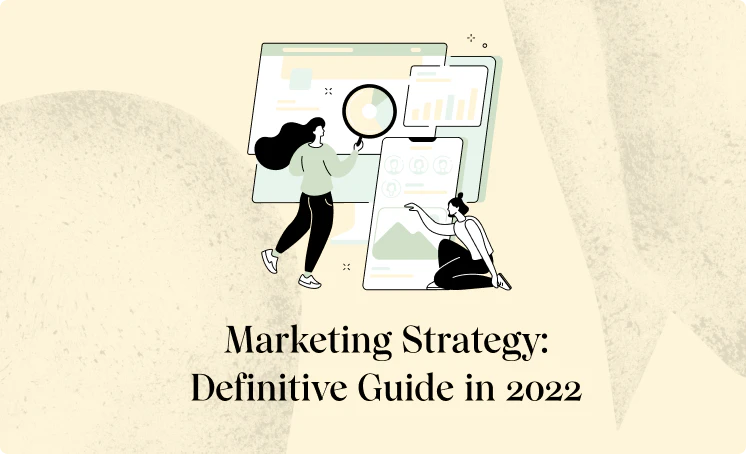































.webp)






